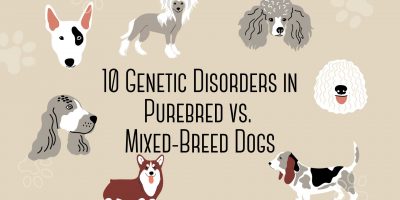
How Much Does Pet Insurance Cost?
Get a clear understanding of the expenses involved in pet insurance. Discover the factors that influence pricing and make informed decisions to ensure your furry companion gets the coverage they deserve.

Pet owners spend $1,000-to-$1,500 a year on pet expenses, according to the 2019-2020 APPA National Pet Owners Survey. A significant percentage of the cost comes from surgical and routine vet visits. Some of these costs can be reduced with pet insurance.
As veterinary care costs increase each year, pet owners often must second-guess the trip to the vet.
What’s more worrisome is that according to a survey conducted by Liberty Mutual, one-in-three consumers adopted or considered adopting a new pet during the COVID-19 pandemic. Yet, nearly two-thirds of pet owners (63%) admit they couldn’t afford an unexpected medical care expense.
Pet insurance gives owners the security of knowing they can cover vet bills and get financial assistance whenever they have to make a trip to the vet.
The cost of pet insurance can vary widely depending on several factors.

Pet insurance pricing can vary widely based on several factors.
Every pet that gets old will need special care of some kind, so the premium price is affected by the age of the pet. Certain breeds of dogs and cats have more hereditary health problems, whereas mixed breeds cost less to insure.
Vet clinic bills in larger cities like New York are higher than other less densely populated areas. Female cats recover faster and have fewer health conditions than male cats. All these factors need to be considered when pet insurance companies price their insurance plans.
Here are several main factors that determine the cost of pet insurance:
The cost of the policy can vary based on the coverage. For example, accident-only is cheaper compared to accidents and illness policies, which offer wider coverage.
The majority of the pet insurance policies are for dogs, and in general, dog insurance costs more than cat insurance.
Mixed-breed or crossbreed pets are usually cheaper to insure than pure bred animals, as pedigree breeds have more hereditary health problems. For instance, certain breeds are more prone to genetic disorders, affecting the premium amount.
Older pets are more likely to have illnesses and injuries than younger pets; therefore, it’s more costly to insure a more senior pets.
If your pets develop health issues before they are insured it will most likely be considered as a pre-existing health condition. In this case, you will not be able to insure them
Male pets are more active and get into accidents more often than their female counterparts, therefore making their premiums higher. Females are considered “low risk” and are priced accordingly.
Typically, bigger and denser metropolitan cities have higher veterinary costs, which are reflected in the price of premiums.

Most insurance companies offer these three types of policies:
The cheapest plans are accident-only plans as they do not cover any illness-related vet claims.
Accident and illness is a more comprehensive insurance plan with accident benefits plus coverage for procedures such as x-rays, surgery, and hospitalization for more serious illnesses like cancer, infections, and digestive problems. It does not include routine vet visits, flea and heartworm prevention, or vaccinations.
Most plans provide an add-on or stand-alone wellness or preventive care to cover routine vet visits, vaccines, microchipping, spaying/neutering, and annual vet exams. Read more about pet coverage and what is included in each policy in our “What Does Pet Insurance Cover?” article.
Pet insurance policies are similar to most health insurance policies in the way they are formulated.
A deductible is an amount that the customer must pay before the coverage begins. The most common deductible options are $100, $250, and $500, and deductibles typically range from $0-to-$1,000. Choosing a higher deductible will lower your monthly pet insurance bill.
Premium is an amount paid by the individual for the insurance policy, which covers the liabilities associated with the policy. Failure to pay the premium amount results in policy cancellation and loss of coverage.
The reimbursement level is the percentage of the bill that the insurer agrees to cover, usually 50%-to-100%. Most insurance policies offer reimbursement of 70%, 80%, or 90%.
Annual max is the maximum amount (the cap) the insurer will pay in medical bills each year. Everything that is above the maximum amount will need to be covered by the pet owner. Many plans offer choices of $4,000, $5,000, or $10,000. Some pet insurance plans offer an unlimited annual payout, which in turn increases the premium price.
Pet insurance costs can vary based on several factors, such as the breed and type of coverage. Statistically, more claims are filed for dogs than cats, and veterinary bills for dogs are higher. According to the North American Pet Health Insurance Association, the average premiums in the U.S. for accident-only policy for dogs was $18.17 per month and $11.13 for cats.
2020 Average Premiums (U.S.)
|
|
Accident & Illness |
Accident-Only |
|
DOG |
Annual: $594.15
|
Monthly $18.17 Annual: $218.13 |
|
CAT |
Annual: $341.81
|
Annual: $133.61
|
Out of 90 million pet dogs, there are 2.5 million insured dogs in the U.S. Dogs represented 83% of in-force gross written premium in 2020, as reported by the North American Pet Health Insurance Association.
The average monthly premium paid for dogs for an accident-only coverage was $18.17, including care for foreign body indigestion, lacerations, motor vehicle accidents, ligament tears, poisoning, and other injuries.
The average monthly premium for accidents and illnesses was $49.51 and covered accident benefits plus diseases such as cancer, infections, digestive problems, And others.
Pet insurance for dogs is growing more popular each year, as each household can expect to make 2.4 visits to the vet in a year. Below are the most popular breeds in the U.S. and their respective average insurance costs.
|
Breed |
Average Monthly Cost |
Average Annual Cost |
|
Rottweiler |
$124 |
$1,489 |
|
English Bulldog |
$116 |
$1,395 |
|
Doberman Pinscher |
$112 |
$1,347 |
|
French Bulldog |
$111 |
$1,328 |
|
Boxer |
$103 |
$1,238 |
|
Labrador Retriever |
$85 |
$1,022 |
|
Golden Retriever |
$83 |
$994 |
|
German Shepherd |
$80 |
$958 |
|
Pembroke Welsh Corgi |
$76 |
$909 |
|
Poodle |
$75 |
$899 |
|
Beagle |
$72 |
$862 |
|
German Shorthaired Pointer |
$69 |
$827 |
|
Dachshund |
$64 |
$771 |
|
Australian Shepherd |
$59 |
$706 |
|
Yorkshire Terrier |
$52 |
$630 |
Source: AdvisorSmith, which used a sample dog profile for a five-year-old animal with no pre-existing conditions for 15 popular dog breeds. Premiums based on up to $10,000 in annual coverage at 70% reimbursement with a $250 deductible.
Cats represented 17% of in-force gross written premiums, and as of 2020, there were half a million insured cats in the U.S. There are 94 million pet cats overall in the country.
Pet insurance for cats is significantly more affordable than dogs as their care is less expensive. The average number of vet visits for cats per year is 1.3. According to NAPHIA, annual premiums for accident and illness coverage cost about 40% less than premiums for dogs.
|
Breed |
Average Monthly Cost |
Average Annual Cost |
|
Exotic |
$44.03 |
$528 |
|
Devon Rex |
$42.77 |
$513 |
|
Abyssinian |
$39.41 |
$473 |
|
Maine Coon |
$38.50 |
$462 |
|
Sphynx |
$36.65 |
$440 |
|
Scottish Fold |
$36.47 |
$438 |
|
Persian |
$36.29 |
$435 |
|
British Shorthair |
$36.15 |
$434 |
|
Bengal |
$35.44 |
$425 |
|
Bombay |
$33.89 |
$407 |
|
Russian Blue |
$33.76 |
$405 |
|
Ragdoll |
$32.86 |
$394 |
|
American Shorthair |
$30.39 |
$365 |
|
Siamese |
$29.97 |
$360 |
|
Domestic Shorthair |
$26.23 |
$315 |
Source: AdvisorSmith, which for a sample cat profile used a male, five-year-old cat in good health with no pre-existing conditions located in Chicago, Illinois.
According to U.S. News, the average cost of insurance premiums for a sample dog profile and cat profile with the following features is shown in the table below:
|
Company |
Sample Monthly Premium for Dog |
Sample Monthly Premium for Cat |
|
|
$18.80 |
$11.13 |
|
|
$23.19 |
$12.35 |
|
|
N/A |
N/A |
|
|
$60.52 |
$35.45 |
|
|
$39.10 |
$12.71 |
|
|
$24.16 |
$11.65 |
|
|
$22.15 |
$23.40 |
|
|
$32.21 |
$18.41 |
|
|
$63.61 |
$28.06 |
All prices shown are for illustrative purposes only. You should contact the insurance company or insurance agent directly for applicable quotes. * Healthy Paws has no benefit limit ** Trupanion’s deductible is per incident throughout its lifetime, whereas other companies use an annual deductible. Trupanion also has no benefit limit. *** The customizable factors for Nationwide are $250 deductible and $10,000 annual benefit limit, for our original archetype does not apply.
As shown in the table above, owners can choose the right plan that best fits their budget and their pet’s needs.
Many pet owners wonder if pet insurance is cost-effective or if it is better to have savings for emergency pet visits. While there is no clear answer as each pet is unique, it should be noted that the cost of veterinary care has more than doubled in the last two decades and is expected to rise more with further medical advancements.
|
Year |
2009
|
2010 |
2011 |
2012 |
2013 |
2014 |
2015 |
2016 |
2017 |
2018 |
2019 |
|
Veterinary Care ($ Billion) |
12.04 |
13.01 |
13.41 |
13.67 |
14.37 |
15.04 |
15.42 |
15.95 |
17.07 |
18.11 |
18.98 |
How far your savings will go in 10 years is hard to predict. However, one way to keep veterinary costs low is to get an insurance policy for your pet while they are still young and have no pre-existing conditions.
Browse our curated list of vendors to find the best solution for your needs.
Subscribe to our newsletter for the latest trends, expert tips, and workplace insights!

Get a clear understanding of the expenses involved in pet insurance. Discover the factors that influence pricing and make informed decisions to ensure your furry companion gets the coverage they deserve.

From golden retriever to beagle – uncover the most popular dog breeds and the approximate cost to insure them.

Gain knowledge of canine genetics by navigating health facts in purebred vs. mixed-breed dogs.
Used by most of the top employee benefits consultants in the US, Shortlister is where you can find, research and select HR and benefits vendors for your clients.
Shortlister helps you reach your ideal prospects. Claim your free account to control your message and receive employer, consultant and health plan leads.